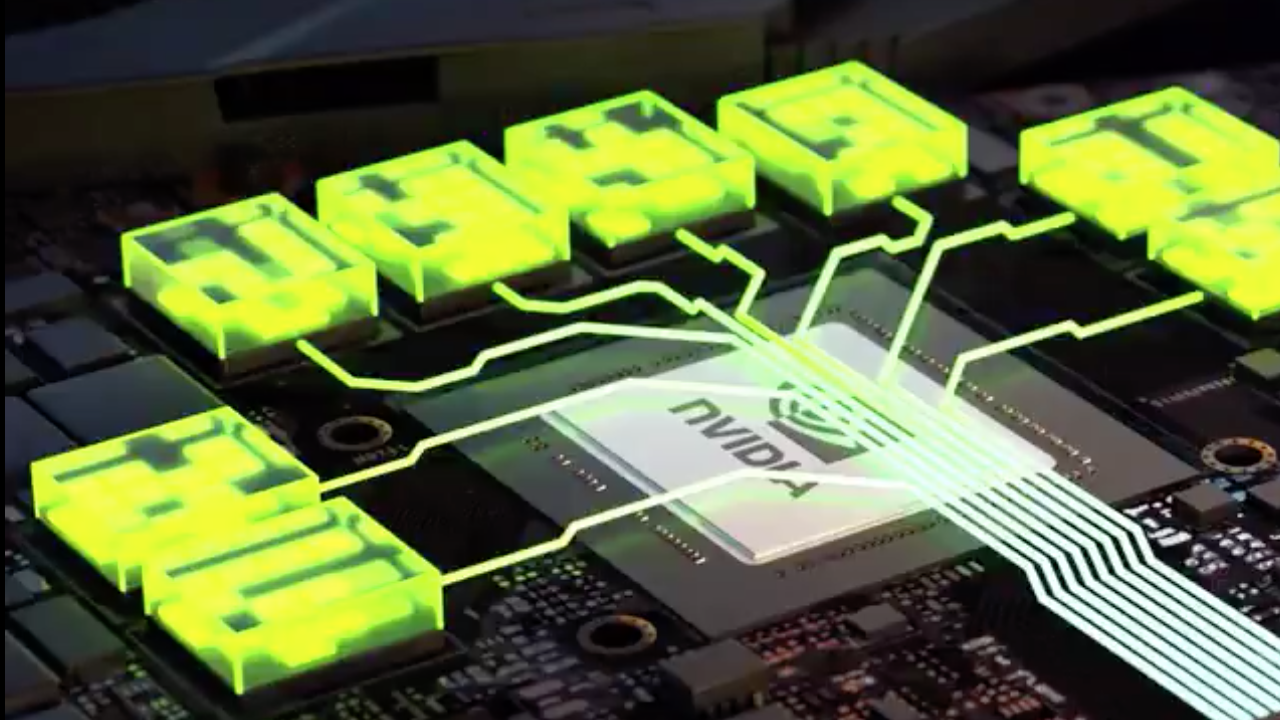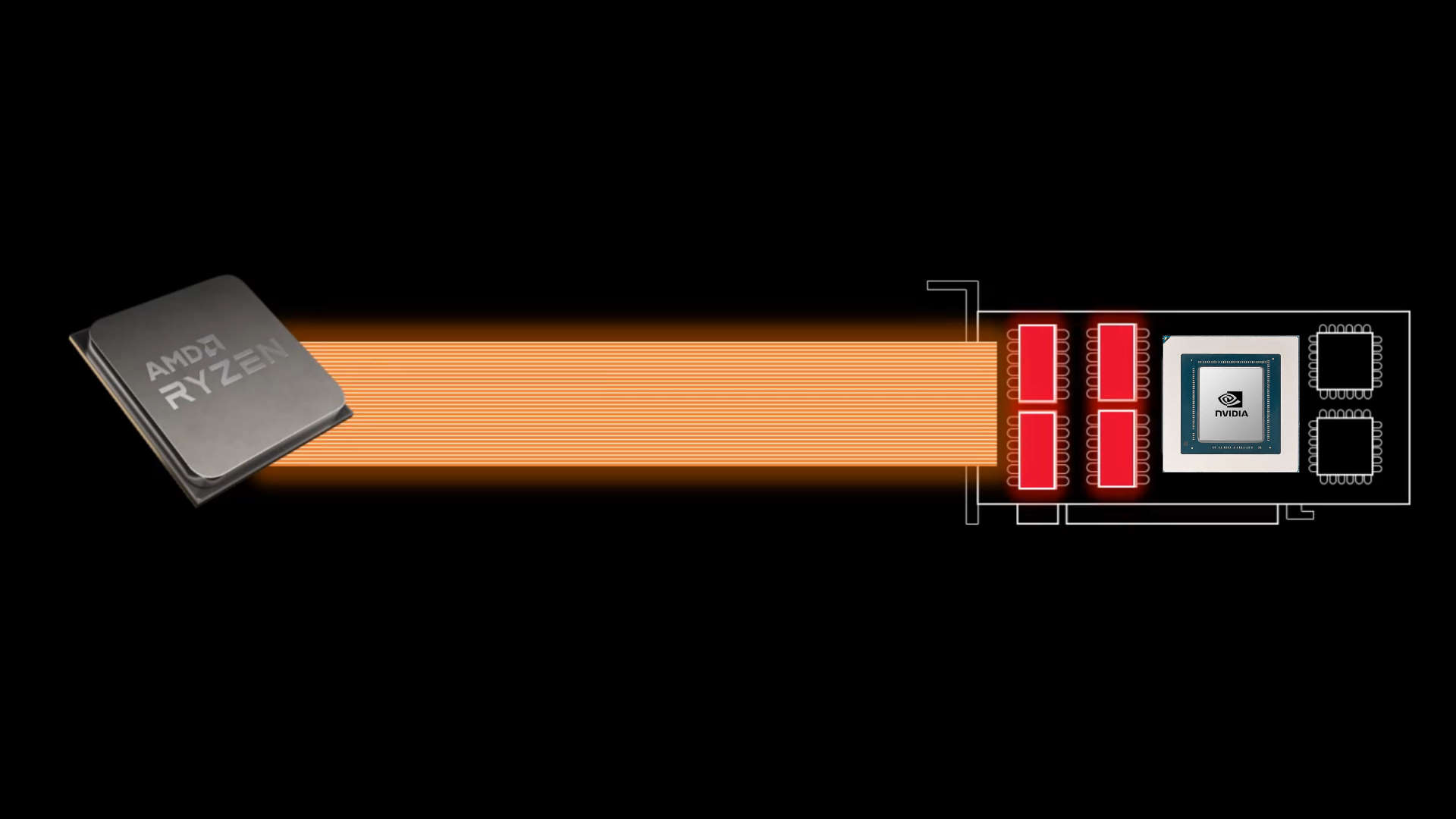Nvidia's mobile Ampere GPUs and answer to AMD Smart Access Memory set for CES reveal
CES announcements galore.

Nvidia is set to announce its answer to AMD's Smart Access Memory (SAM) technology tomorrow at CES. Known as the resizable BAR, it's claimed to enable similar performance gains as AMD SAM using not only Nvidia GPUs but also Intel CPUs. We're also expecting Nvidia to roll out its new Ampere-based RTX 30-series mobile GPUs tomorrow.
As we've noted previously, the so-called resizable BAR feature has actually been part of the PCI Express specification for a few years. As with AMD's SAM, the main aim is to increase system (and in turn CPU) access to the full graphics frame buffer over the PCIe bus, rather than being limited to accessing it in 256MB chunks.
In our testing, we found SAM delivered up to 10 percent increase in performance, though typical gains were in low single digit percentage territory. Until now SAM has been tied to a combination of AMD's latest Ryzen 5000 CPUs and Radeon RX 6000 GPUs, making it both pretty exotic and currently almost impossible to achieve thanks to supply shortages of AMD's RX 6000 graphics cards in particular.

However, Nvidia's plan is to open out the resizable bar to include Intel CPUs and PC platforms running PCI Express Gen 3.0. For once, it seems it's Nvidia taking a more democratic approach to a technology, then. And according to a tweet from WCCFTech's hardware editor, the new feature will be announced tomorrow at CES as coming to the RTX 30 series of GPUs.
As for Nvidia's new mobile GPUs, Nvidia's promo sizzle for tomorrow's CES event includes a glimpse of a laptop and what looks like a mobile GPU, as spotted by Sweclockers. So, it looks very likely a full reveal of some mobile Ampere GPUs is on for tomorrow.
👀👀👀 pic.twitter.com/AHn0BWTYBhJanuary 9, 2021
We've detailed the likely specs already, and it looks like the branding and specs of the new RTX 30-series mobile GPUs won't quite align with their desktop counterparts. We're expecting, for instance, for the top RTX 3080 Mobility chip to be based on the GA104 die rather than the beastly GA102 chip at the heart of the desktop RTX 3080.

Best CPU for gaming: the top chips from Intel and AMD
Best graphics card: your perfect pixel-pusher awaits
Best SSD for gaming: get into the game ahead of the rest
The mobile 3080 is said to be a full unlocked version of the GA104 die packing 6,144 CUDA cores, as opposed to the 8,704 cores of the desktop 3080. Given how hugely power hungry the RTX 3080 has proven on the desktop, it's hardly surprising that the GA102 GPU hasn't proven suitable for squeezing into laptop PCs.
The biggest gaming news, reviews and hardware deals
Keep up to date with the most important stories and the best deals, as picked by the PC Gamer team.
Anyway, expect a pretty full range of mobile GPUs, topping out with the RTX 3080 and extending down to the RTX 3060, which will likely be based on the smaller still GA106 chip.

Jeremy has been writing about technology and PCs since the 90nm Netburst era (Google it!) and enjoys nothing more than a serious dissertation on the finer points of monitor input lag and overshoot followed by a forensic examination of advanced lithography. Or maybe he just likes machines that go “ping!” He also has a thing for tennis and cars.

